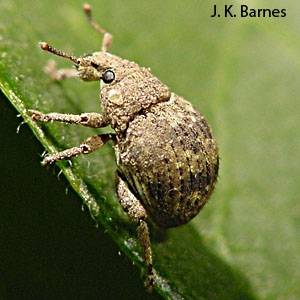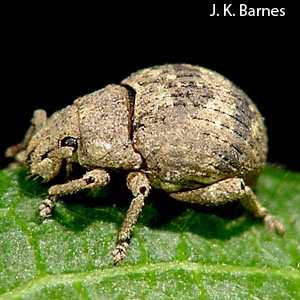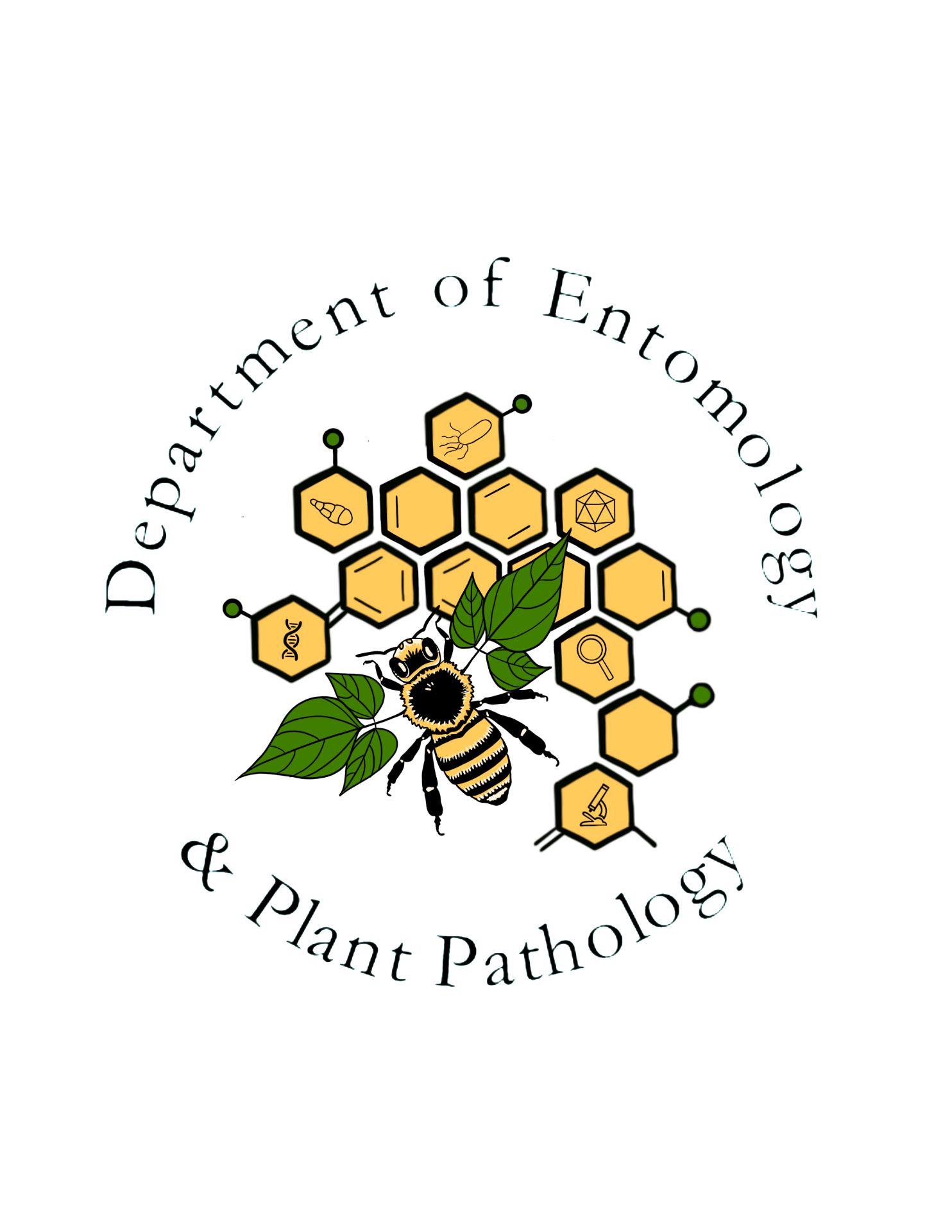Twobanded Japanese weevil
Order: Coleoptera
Family: Curculionidae
Genus and species: Pseudocneorhinus bifasciatus Roelofs


The twobanded Japanese weevil, native to the Orient, was first found in the United States in 1914 near Philadelphia. Adults are flightless. The species’ slow spread across the eastern states is likely caused by movement of nursery stock. Adult twobanded Japanese weevils feed on leaves of a broad range of host plants, and when they are abundant they can cause major damage especially to landscape plantings. They are stout weevils about one fifth inch long and covered with brown and grey scales forming two crossbands on the elytra. This species overwinters as adults, larvae and eggs. Females begin feeding on foliage and laying eggs in the spring. They fold and glue leaves of the host plant to form egg pods in which they deposit 1–9 eggs. They are assumed to reproduce parthenogenetically, and males are not found in the North American population. Larvae feed on roots of the adults’ host plants. While adults cause defoliation, larvae destroy the roots.
